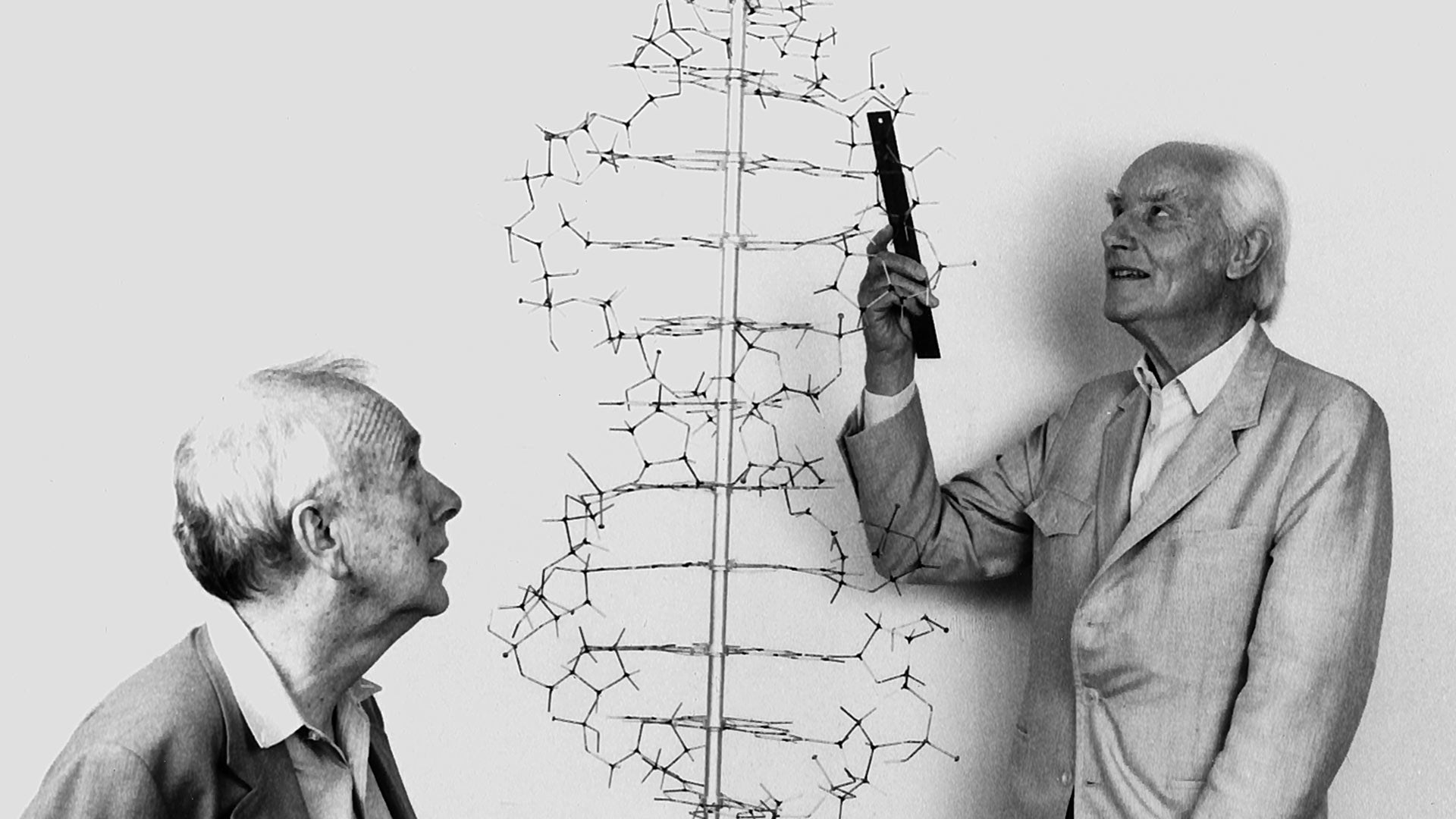Cold Spring Harbor, NY — Today, on the 60th anniversary of the publication by James D. Watson and Francis Crick of an article describing the double-helical structure of the DNA molecule, two historians of science are shedding new light on the nominations leading up to the 1962 Nobel prize for the structure’s discovery.
Alexander Gann and Jan A. Witkowski, both professors at the Watson School of Biological Sciences at Cold Spring Harbor Laboratory (CSHL), reveal in a Correspondence appearing today in Nature—the same journal that published the famous double helix paper on April 25, 1953—that one of the early nominations of Watson and Crick for Nobel honors proposed that they receive the prize in Chemistry, not in Physiology or Medicine, the category in which they were ultimately recognized.
The nomination in question was made in early 1962 by the French biologist Jacques Monod. Gann and Witkowski, going by Watson’s own account in 2007 (in his book Avoid Boring People) figured that Monod had addressed his nomination to the Nobel Committee for the prize in Physiology or Medicine. When they checked the archives the letter was not there.
“We found it instead in the archives of the Pasteur Institute in Paris, and, contrary to received wisdom, the nomination was for the prize in Chemistry,” they write. In fact the 1962 chemistry prize went to Max Perutz and John Kendrew for their determination of the structures of hemoglobin and myoglobin.
But as Gann and Witkowski note, Watson and Crick, along with their colleague Maurice Wilkins, had indeed been nominated for the prize in Physiology or Medicine as early as January 1960, by George Beadle. Several other nominations are documented in the 1960-61 time frame.
Having the same scientists nominated in more than one field must have posed problems for the Nobel judges, the historians suggest. The decision to recognize the double helix discovery in Physiology or Medicine reflected a recognition of the hugely important biological implications of DNA’s structure, they say.
On the final day of 1961, Francis Crick sent a letter to Monod, at Monod’s request. It was a nine-page account of his and Watson’s 1953 discovery. Crick laid out what was known before work on the structure began in 1950, detailed his and Watson’s contributions and summarized work confirming that their model was correct.
This letter by Crick, note Gann and Witkowski, acknowledges the importance of Rosalind Franklin’s X-ray data for certain features of the structure. Franklin died in 1958 and, because the Nobel prize is not awarded posthumously, she could not have been considered in 1962, nor indeed at the time of any of the earlier nominations.
Written by: Peter Tarr, Senior Science Writer | publicaffairs@cshl.edu | 516-367-8455
Citation
“DNA: Archives reveal Nobel nominations” appears April 25, 2013 in Nature. The authors are Alexander Gann and Jan A. Witkowski. The correspondence can be viewed at http://www.nature.com/nature/journal/v496/n7446/full/496434a.html
